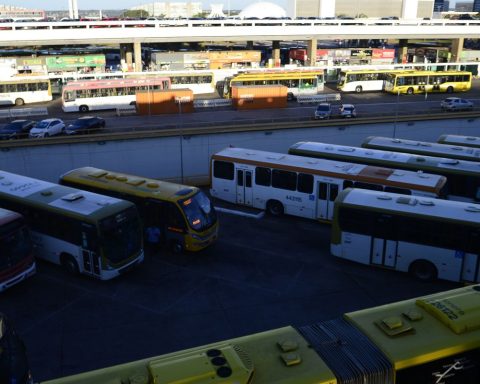The sustained pace of the economic slowdown and the fight that the Bank of the Republic has been waging for more than a year against the cost of living in Colombia are two factors that have undoubtedly hit the financial sector, mainly from one of the fronts that throughout history has driven development through debt, if one takes into account that the Nation has grown mainly from “debt”.
Having brought interest rates above 13%, where they remained For almost a year, although it was a necessary measure, it had an impact on the country’s appetite for debt remaining frozen for a similar period, or at least that is what can be seen in the evolution of the portfolio recorded by the Financial Superintendence, where it is clear that items such as credits remained unchanged.
Other news: Video: American deported after causing altercation at El Dorado airport
However, all this seems to have changed in June, when after a year hovering around the $680 billion barrier, Colombia’s debt levels finally picked up significantly, almost 2%, both in gross and current loans; while the levels of default, that is, the number of Colombians who defaulted on their commitments, remain relatively calm.
Portfolio composition
Recently, the Superintendency of Finance announced the cutoff for June of the composition of the portfolio in the country, in which it reports that Colombians (companies and individuals) currently owe $694 billion to the financial system, of which $653 billion are current portfolio and $35 billion is in default, while the portfolio at risk stood at $68 billion.
Credit card
iStock
Overall, of the nearly $700 billion in the portfolio, 51% ($354 billion) are in the commercial sector, while $208 billion is in the consumer portfolio and $19 billion is in microcredit. If the total is compared to the $682 billion that was held a year ago, it is clear that this indicator has finally begun to pick up, as it has increased by more than $12 billion.
Marking a growth of this level for June is a fact that is not minor if It is taken into account that between that month of 2022 and May 2023 it had barely grown by $6 billion, after comings and goings in which the increase in debt rose and fell due to the little appetite generated by high interest rates.
More information: Details of the project that seeks to prevent the recruitment of Colombian mercenaries
VIS housing
Another element worth highlighting in the figures presented by the Superfinanciera is the slight upturn shown by the housing credit sector, which increased by 1.7% in real terms and compared to the data for June 2023, being the sixth consecutive month with positive variation after 11 months with negative records.
“This behavior coincides with the correction of the effect of inflation; In nominal terms, the housing modality grows 9% annually. Disbursements in June reached $1.8 billion, driven by the Non-VIS segment. In the case of VIS financing, the portfolio balance reports a real annual variation of 15.7% and in Non-VIS of -4.5%,” says the report.
In other words, the debts for real estate sector loans currently total $118.6 billion, of which $47 billion are for non-VIS housing, while the VIS sector is in second place with $25.08 billion and housing leasing is in third place with a portfolio exceeding $20.5 billion.

Colombian pesos
iStock
Disparate data
Although what has been mentioned so far seems good at first glance, the analysis of the Superintendency is not so optimistic, since it adds that in accordance with the credit cycle, the entire portfolio 15 months with negative annual real variations and registered -5.1% in June in the gross balance.
This is explained by “the negative annual real variation in the consumption and commercial modalities, which could not be neutralized by the positive variation in microcredit and housing; by the correction of the inflation effect to the extent that the nominal growth rate (1.7%) is higher than the real variation, and by the dynamics of the write-offs that in June totaled $2.1 billion, mainly influenced by the consumption modalities with a 78% share and commercial 11.7%.”
You may be interested in: ANI and Invías toll prices will not have any further increases in 2024
On the other hand, they warn that the commercial portfolio registered 13 months in June consecutive with negative annual real variation, in line with the macroeconomic environment and emphasize that when looking at the inter-monthly data, the balance of the commercial portfolio increased by a net $5.8 billion, due to the positive contribution of segments such as corporate ($3 billion) and foreign currency ($2.3 billion).

Superfinanciera
Courtesy of Superfinanciera
“The approval rate for this portfolio reached 89.9% of the number of applications and $24.7 billion was disbursed. Breaking down the variation by product, positive records are observed in the official or government sector with an annual real variation of 7.9%; and in the financial and institutional sector of 2.8%; while, the products for SMEs, microenterprises and foreign currency registered negative data of -13.2%, -11.2% and -8.8%, respectively,” they added.
Finally, the Superintendency of Finance points out that the consumer portfolio continued in the declining phase of the credit cycle with a real annual variation of -11.1% (-4.7% nominal) in June. Of this rate, 66.2% is explained by the free investment product, which has accumulated a real annual decrease of -21.4%.
It is preceded by low-value consumption (-50.4%) and then by revolving credit (-17.7%). In contrast, the category Other consumer portfolios grew 36.7% and consumer spending in June reached $13.4 billion.


















